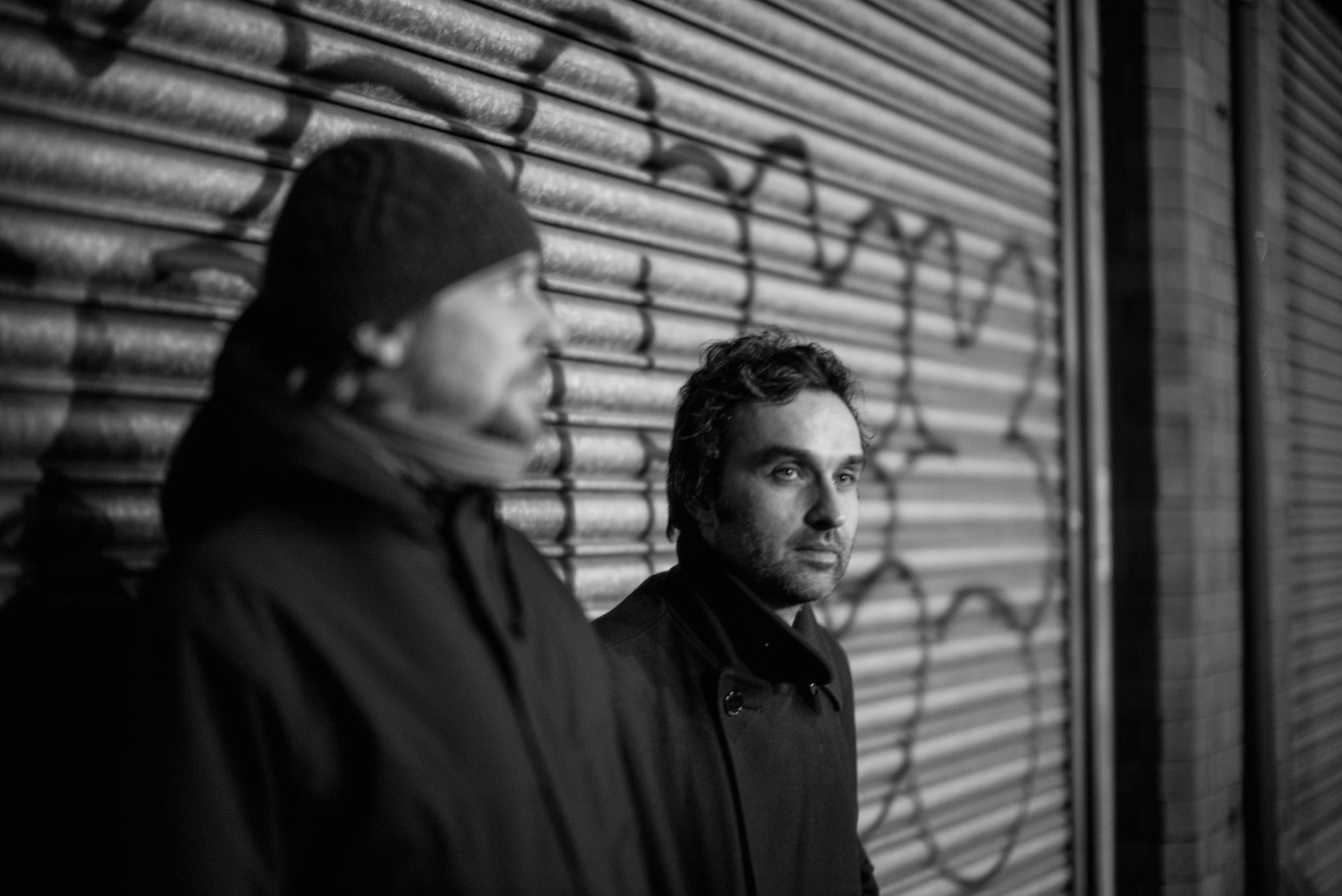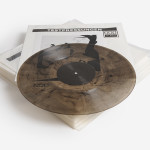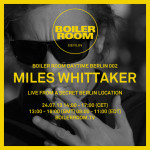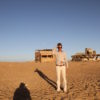Words ANDREW PARKS
“I’m into the idea of acoustically crazy places,” says Miles Whittaker, one-half of Demdike Stare and a mad-for-it side project with Andy Stott called Millie & Andrea. “Like here in Berlin there’s the old listening station far out in West Berlin. It kinda got abandoned but it has these huge domes in it and the acoustics are unbelievable. Your brain can’t correlate the signals; it’s imbalanced, super weird. I’d love to make people literally fall over by playing certain things.”
That probably won’t happen when Whittaker and his longtime friend/fellow Demdike producer Sean Canty present the stateside premiere of their live Häxan score this week, but the rare performances are sure to feature the rope-tightening dynamics that have made the duo a must-see over the past few years. Or as Whittaker puts it, “The tension in the room is unbelievable at times.”
In the following exclusive interview—conducted over Skype while they were in different timezones—we discuss everything from the one untouchable form of music the pair agrees on to what’s with all the witchcraft references…
self-titled: How long have you two been living in separate cities?
Miles Whittaker: I’ve been in Berlin for about three and a half years. I moved out here really quietly because Berlin’s very fashionable and I just want to live there because it’s cheap.
Is it still cheap?
Miles: It is. I have a really nice apartment for very little money… I know some people who pay more but they just want to live in a fashionable area.
And what’s your situation Sean? Do you still work for Finders Keepers or are you just focusing on this now?
Sean Canty: It’s pretty much full-time Demdike these days, yeah. Which is cool—something we’d always worked towards. And I’m still in Manchester.
Miles: You still do a little for Dead-Cert don’t you?
Sean: Yeah, but it’s a loose relationship because we’ve had to focus on Demdike over the past couple years. And we’re doing DDS now too.
Are you trying to sign younger artists to the label this year?
Miles: It depends on the music doesn’t it? It’d be really good to put some new artists out but it’s gotta fit with the stuff we already have coming up.
Which is?
Miles: Well the next release is a mixtape by us with a 12-inch by Shackleton. It’s a bit of a diversion for Shackleton, really—an old track that he did years ago. It never came out so I always wanted to release it. He finally agreed to do it around December of last year.
Is it from the Soundboy days?
Miles: It is. It’s kinda pre-Skull Disco, a track he made for the nights he was running down in London. When you hear it, you’ll understand why it hasn’t come out before.
What’s the mix like?
Miles: We decided to evolve the [mixtape] format this year. And the best way of doing that was pairing it with a track that’s featured on the mix. It gives us a lot of freedom. Like we could issue a really old track next, from the ’70s or something. Or it could be a completely fresh thing. It kinda guides itself and is all tied together.
Sean: It’s a good time because we’ve paused the Testpressing series for a minute and moved onto this one.
You’re not going to repackage them like you did with previous Demdike Stare releases?
Miles: I don’t think so, no. It’s nice to leave them be. Packaging them up in a different way is a bit cheap. The only reason we did that with earlier releases was because the demand was high. I started seeing the records going for a lot of money and felt like we needed to give people the music in another format. The Testpressings are different because we lost a few people with them since they’re more extreme and heavy.
You really feel like you lost some listeners? A lot of people seemed to still dug them.
Miles: The feedback’s been fantastic but the funny thing about Demdike Stare is the first few releases were loosely grouped around electronic music. So you had world music influences, you had ambient tracks, you had heavy dubstep bass. We pull things from lots of different areas, so I think we may have possibly lost some ambient fans along the way. But who knows what we’ll do next? Maybe it’ll be the opposite.
The last time I saw the two of you perform was at Unsound in New York, and it seemed like you might build an album around that performance since it was described as a “work in progress”.
It is, but the point of that project is to see and hear it. You can’t repackage everything. It’s really important for electronic musicians to somehow make seeing a performance an exciting thing. A lot of electronic music is pretty boring, performance wise, to be honest. I like that [“Concealed”] is a throwaway that’s also a little special.
Is there no clear next step for this project then?
Miles: There isn’t really. We’ve worked on a lot of new music over the past few months but releasing other people has become really exciting for us. We’re still not sure what direction we want to take.
Trying out so many styles with the Testpressing series must have opened up lots of new creative doors.
Sean: The Testpressings allowed us to recalibrate a little bit but it’s also put us in a very funny position. At the moment, we’re in a place where we just need to write a lot of music.
Let’s talk about the visual side of what you do. You first performed Häxan more than a year ago; has it changed at all or do you still have most of the same cues in mind?
Sean: There’s definitely a few cue points in the piece but there’s always room for me and Miles to improvise.
It’s ironic that you ended up doing so much film-driven work lately. When you first started, wasn’t the whole point music that painted a picture without visuals?
Miles: I think that’s more to do with me and Sean not expecting to release the music we were writing. We never expected to play any shows, and when you start playing shows, I think it’s a little bit of insecurity since Sean and I are standing onstage looking like we aren’t doing much. Sean’s also quite a film collector so we started getting really excited about using some of that footage and not feeling like we were doing this patchwork project. When we started, we didn’t intend to release any of it. But then the label heard it and wanted to put it out. You kinda jump the gun in a way, but I’m really happy with where we are because it seems to be coming together.
You’re more of a hardware guy. How did you figure out your setup?
Miles: The thing with computers is you’ve always got a backup. It’s really safe. When I first started doing it, I didn’t want to take a few thousand dollars worth of equipment to play a show somewhere. But then, after playing 10 shows, I actually felt bored. I can’t play a show of my own music for someone if I feel that way. You have to be a little on edge; you start to get more confident with what you’re doing while leaving room for improvisation. It’s weird, because we’ve started tailoring shows to venues. That’s a whole new world of making people feel uneasy.
In terms of the acoustics?
Miles: Yeah, and the space. Like with airports, where people’s emotions are at their rawest. Everybody’s in a bad mood at some of them, and in others, everything’s cool. That’s the same as watching a show; you can feel how everything might go wrong, and you can use it. That’s what people remember—the emotive aspect.
Well the sense of something going wrong can be exciting in a way.
Miles: Yeah, of course. And you come away with having an experience instead of just showing up and doing your job. This is not a job, this music thing.
What’s a unique venue you’d like to play?
Sean: Well me and Miles read this book recently called Sonic Wonderland. It has to do with interesting spaces for sound throughout the world. Like we did a show in Copenhagen with ridiculous amounts of reverb.
Miles: It was like this huge underground mausoleum, wasn’t it?
Sean:It could have been an absolute sonic nightmare if we’d showed up and played Testpressing-type material, but our catalog is so vast we can try out all kinds of material and tailor it to the venue.
How did you approach doing the Häxan project given that there was already some overlap between the movie and your work, like the name of your early club night and Demdike work? It must have seemed like an obvious fit at first.
Miles: Yeah. We have turned down a lot of work in the past because it seemed too obvious. But the Haxan club night was pre-Demdike Stare, when we started playing records for each other again and thinking about making music. That’s part and parcel of Demdike Stare, really, and with it being the first witchcraft movie, it’s literally the most obvious thing we could do in the world. When BFI asked us, we thought, “Flipping right, let’s do it.” It’s a challenge because the original performance was like an hour and 45 minutes, a long time to play and ask people to sit there.
So was your club night named after the movie?
Sean: It was, yeah. It ties into what we’d talked about for some time, how where we’re from has a rich history of witchcraft. It seems pretty cheesy now to call it that but at the time, it was the most obvious thing to do.
What’s your personal connection to that movie? When did you first see it and did it resonate with you right away?
Sean: I think I came across it through a book about subversive art that led me to a lot of movies, from Czech New Wave to Italian horror films. I was always into things with atmosphere, whether it’s music or films, but I can’t remember the year I first saw it.
Did you like it?
Sean: That’s a good question. There’s elements I really liked about it and elements I felt didn’t need to be there. Who am I to pull someone’s work apart though? With music, I have quite strong opinions, but I look at films as a fan. I take it for what it is in a way because I’m not a filmmaker.
Well if you could edit one scene out, what would it be?
Sean: I don’t know. It’s a delicate subject because I’m anti people crowbaring art.
Miles, do you remember when you first saw the movie? Was it more recently?
Miles: I was aware of the movie through Sean for a few years, but I’m not a film buff in the slightest. Only in the last few years have I gotten more excited about it. I hadn’t seen Häxan until BFI sent a copy through. It’s not really my forte. Sean has the best taste in the world as far as I’m concerned, so I trust him.
Well what did you think of the movie once you saw it?
Miles: Given the year that it was made, I was amazed. Some bits must have seemed quite shocking at the time, but the first time we showed it through BFI, people were laughing at some points. They weren’t funny when they were made but in the context of now, they are. Religion and blasphemy were really serious back then, but I was amazed at how down-to-earth it was. I was expecting something that was much more provincial.
Did you pick up on all the metaphors in it, or do they seem really heavy-handed now?
Miles: It’s relevant to our times really. All you have to do is transfer the metaphors to the Middle East and you have the same shit happening there. The world is still the same, so it’s a really good commentary. Not just on witchcraft but people being suspicious of other humans.
Paranoia then?
Miles: Of course it is. That’s where it all stems from. And it’s pretty relevant now I suppose.
A lot of different scores were already made for this movie. Did you listen to any of them beforehand?
Sean: No, we didn’t listen to anyone really.
Miles: It’s kind of weird isn’t it? Kind of a strange influential move in a way. Listening to other people’s music, especially in the same realm, can lead to you becoming de-inspired. I’d rather just approach something really fresh. We don’t want to do anything traditional, so we ditched the strings and ditched the orchestral arrangements which ruins Hollywood in a way. They have these beautiful movies with crappy scores.
It must be hard doing something from scratch. There’s always the chance of creating something that feels too forced or doesn’t quite work in the context of the film.
Miles: It is and it isn’t. You can be really subtle with what’s going on because the visuals are part of the music. People are concentrating on something. That’s the whole thing about library music and the best film scores—they add the tension, mood and emotion without shouting in your face. It was a daunting task but I found it really fun once we started working on it. We also wrote quite a bit of music alongside it. We’re in a really lucky position because we’re not specifically about one thing. That gives us so many jumping off points to re-score a movie or release records. We’re also shepherded by a label who are unbelievable at what they do. We just do what we do, then the label (Modern Love) guides us around it. That works whether we’re talking a commission for a one-off show or an installation or a record.
Sean: As we’ve said many, many times, the label really is the third member of the band.
Do they still help you whittle your tracks down into what you end up releasing?
Miles: Yeah. We’re still pretty prolific; we’ve possibly done about 50 tracks in the past two months. But that’s all we’ve done—we’ve literally just been in the studio and not playing any shows. We’re still not happy with any of the directions; we’re still experimenting. If it works, it works. If it doesn’t, you just gotta keep going. We’re fans first; that’s the rule of everything. The label lets us do whatever we want really.
You work on stuff remotely a lot right?
Sean: We do. It’s a lot easier now with things like Dropbox, even if we are in two different countries.
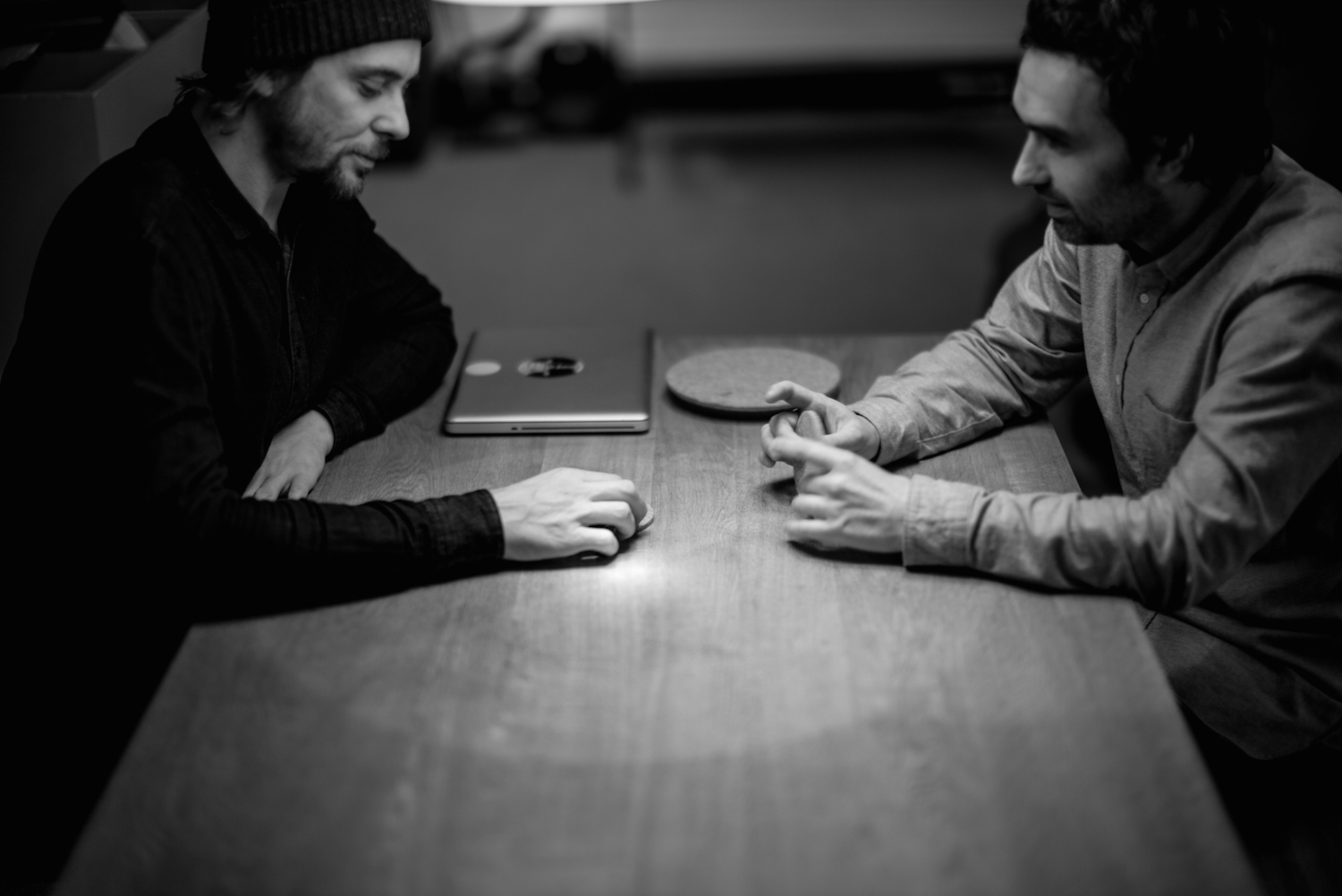
Do you feel like it works out better in a roundabout way with each of you working on things individually and then presenting it to each other?
Miles: Well I run out of steam when I’ve been on my own for a while. When me and Sean are together, we kinda forget about everything and everybody and get really excited about music. That stuff flows; it could be five tracks in a night sometimes. We’ve passed our falling out points too.
Sean: We’ve both got our strengths. Like I don’t ever get stressed about ideas, but I’m not the most technical person.
What was the largest creative roadblock between the two of you in the beginning?
Miles: It was more things before Demdike Stare because Sean and I came from two different worlds.
From rave and hip-hop backgrounds right?
Miles: Exactly. And because we came from a very small town, we were bumping into each other all the time, but our worlds were very disparate. When we realized we were both very serious about what we do, we ended up becoming friends. Sean was friends with my younger brother; that’s how I met him. We’d fall out because I’d be too proud to admit that hip-hop is good and he’d just be like, “You’re really small-minded. You’re just into drugs and music.” Those were the growing pains. More often than not, it was me saying Sean doesn’t know what he’s talking about even though he has much better taste than me.
Sean: I was so obsessed with sample-based music that I never appreciated the technicality of certain electronic music. In some ways, if a record didn’t have a sample in it, I didn’t [listen] to it. It took me years to appreciate the craftsmanship of sound design. Miles thought we could do something where these two worlds collide, where we could reference music from the ’60s and ’70s in a club environment. It took us years. Jazz is actually what brought us together.
Jazz?
Sean: Yeah. We’ve been into buying records for years, but jazz is the one genre we don’t know. It’s always like, “What’s happening there?”
Miles: It’s just alien.
Sean: And it’s so beautiful. It’s like the first time I heard De La Soul’s 3 Feet High and Rising, where I was like, “How did they do this?”
What was a breakthrough moment for each of you in terms of getting into jazz?
Miles: It’s a really difficult thing to talk about in a way because it’s such an unfashionable form of music at the moment. One thing I’ve learned is there’s a piece of music is every single genre for everybody. Sean has a knack for playing me something I can reference to my context. Like he was talking to me for years about Black Sabbath, and I was like, “Whatever. Why would I want to listen to Black Sabbath?” And one day, I was walking through a mall somewhere and “War Pigs” came on. It just changed my life. I heard the riff and I heard the beat, and I was like, “He’s right!” That’s the same thing with jazz. You’ll hear one track and be like, “I love this music. It’s amazing.” You can’t ever say you don’t like punk or you don’t like techno or you don’t like acid. That’s bullshit. You will like something from it. You just haven’t heard the right music yet.
So what are some examples of the right music for both of you?
Sean: My dad was a big jazz collector but I wasn’t that into his records. The way Miles and I got into it was through loop-based music. Like figuring out the samples from A Tribe Called Quest and then finding the original records for the breaks. Then eventually you start appreciating the piece in its entirety and it goes on and on like that.
Miles: It snowballs very easily.
Sean: It’s not just hip-hop. I remember Miles playing me Patrick Pulsinger records. They may be dressed in an electronic sleeve, but they’re jazz records, you know? If there’s one thing Sean and I would like to do, it’s to release a jazz record. It’s this treasure on the horizon that we might one day learn how to play an instrument.
Do you feel uncomfortable trying to do it then?
Miles: I like to keep it magical. Jazz is the last untouched wonder for me. There’s so much I’ve never heard. I don’t even want to attempt to bring it into my world. It’s like seeing something that’s set in amber, this endless mine of wonderful music.
Sean: This is one of the reasons why we do the mixes—so we can show people how much the genre means to us. That’s as punk rock as we can be.
Can you see yourself reissuing a jazz record alongside a mix someday?
Miles: We were talking about one of my favorite jazz records just yesterday actually. It’s never been released on vinyl, and I really want to do it. Maybe we can do it in another five years. I don’t think the world we inhabit is ready for it yet.
https://youtu.be/gWjDLSoUuh0
What jazz record is it?
Miles: A UK jazz record called “Dusk Fire.” It’s the best jazz record I’ve ever heard in my life. Literally. I’m not saying it’s the best ever made. I’m just saying it’s the best I’ve ever heard. It captures the UK jazz scene morphing from something that’s more traditional into something that’s more experimental. It’s a bit Eastern, it’s a bit tribal, it’s a very complicated album. The more I hear it, the more I love it. I measure everything against it.
To bring things back to Häxan, what’s the first time a film’s music impacted you as much as the movie itself?
Sean: I’ve said this many times before but the film that pretty much changed my life was A Lizard in a Woman’s Skin. It changed my life sonically and visually. It was the first time I’d heard Ennio Morricone playing more abstract, experimental work. It was just mind-blowing and to be honest, I felt like no one else had heard it either, because it was pre-DVD in a way. It was like the first time I heard A Tribe Called Quest, literally changing my life forever.
What about you Miles?
Miles: I’m much more pop culture in a way. I have nowhere near the experience in film that Sean has. He’ll send me stuff and certain things will blow my head off, but the crowning moment for me was when I saw 2001 in the cinema. I didn’t know it was him back then but I heard Ligeti and was like, “This music is making me so uncomfortable. I was stoned in this cinema and it was the perfect thing to unsettle you. It’s an empty film and the music is empty as well. It struck me as the first time I really gelled with something visually and sonically. It’s a mainstream film but the music is difficult.
Is that a high water mark for what you’re trying to do then?
Miles: Well Sean introduced me to library music and its sole intent is to create mood and atmosphere, whether the title is Holidays in the Sun or Science and Technology or Aquarium. When Sean started playing me that stuff, I thought, “This is the best music ever because it’s designed to be emotive no matter how you look at it. I think that’s much more honest than alluding to something that’s dark or beautiful. The other thing is these songs were never commercially released; they were just someone’s day job. That kinda give you the most beautiful moments because it captures time and space when you record a piece of music. That’s the human element of culture, really—having a piece of time and space packaged, not just rendered whenever you want.
Would you ever consider doing a library music record or would it seem too canned?
Miles: I don’t think we would. We’re influenced by elements of it, whether it’s sleeve design or the music itself. Some of it’s astonishing, like the electronic music from the ’70s that’s just techno. Like, “Rob Hunt made a techno record in 1974? Amazing!” It just gives you hope. We’re in a very small world of music. We don’t sell too many records, but I like the idea of carrying on with this freedom, and hopefully some people discover it down the road.
What’s something you’ve done that hasn’t gotten much attention but you’re particularly proud of?
Sean: I can answer for Miles. His Suun Ciuque project is phenomenal. It made me really think of the studio in a different way. We’re also so proud of the records we’ve put out on DDS. It’s come full circle to be able to put out a Nate Young record when he was a huge influence on why Demdike Stare happened. And then to go on tour with him? It was just unbelievable.
His Demons project was a major influence on Demdike Stare right?
Miles: Yeah. Sean played his Frozen Fog record and it opened up that world to me. I was just like, “What the fuck is this music? I kinda knew Wolf Eyes but I wasn’t dabbling in that scene at all.
Sean: Another key record in our relationship was Miles playing TK Tobin for me years ago. So putting out an album by him was just next level for us.
Is there anything else you can tell us about that’ll be out on the label soon?
Miles: We’ve got a few things but nothing’s super confirmed yet. Once we get test pressings back, we’ll start talking about stuff. We’ve decided to concentrate more on that because last year was so exciting for it. One thing we’re going to do in a month or so is a vinyl issue of Mica [Levi]’s tape that’s been altered slightly.
And it’s all about Demdike Stare right now? You’re not working with either of the Andy’s on anything—Andy Stott or Andy Votel?
Miles: We’re kinda always at it in a way.
Sean: Miles was playing with Millie & Andrea just last night, and I have some shows coming up with NeoTanktrik in a few weeks. There’s always something, but it’s solid, head down writing time for me and Miles now I think.
Are you hoping to release something by the end of the year?
Sean: I don’t know. We don’t put that kind of pressure on us. We’re just working out the next phase by writing music.
Maybe people will keep asking you to do movie stuff so you don’t run out of money?
Miles: There is that aspect to it, but I can sell some records if I need to.
Or could you just repress more stuff.
Miles: Yeah, it’s cool, but I’m sometimes a little bit funny about that.
Because it can cheapen some releases?
Miles: You can keep doing it, but there are some things we’ll never reissue because they were of their time.
What’s one example of that?
Miles: We probably won’t do the first few twelves. They’re gone now, because they were just sketches anyway. We’re not ashamed in the slightest but the need’s not there to keep doing that. It’s more exciting to put more new stuff out like the Testpressings. They were a way of having people watch us play with the form, whether it’s UK garage or whatever. I’d much rather look forward than backwards.
Is the Testpressing series over or is it a more open-ended thing?
Miles: It’s more open-ended. The last one felt like a nice peak. We’d rather concentrate on the areas we’re going to uncover next. That’ll lead us to even more new music.
